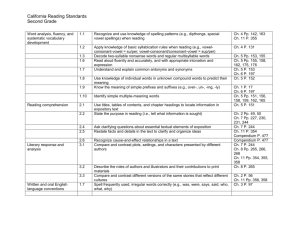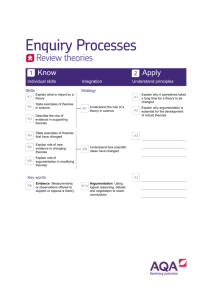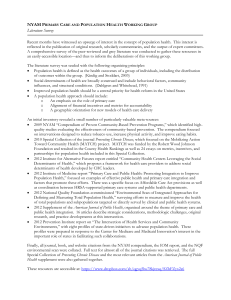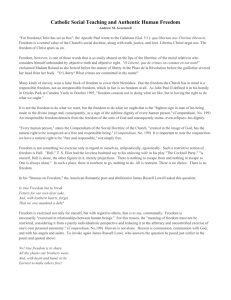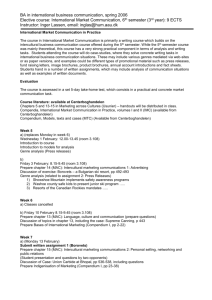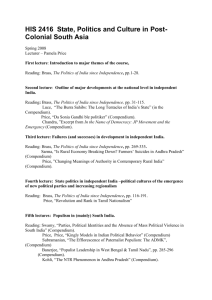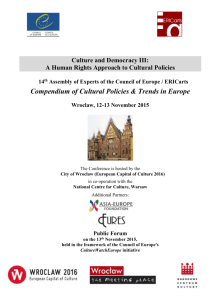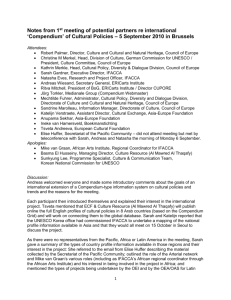Supplementary File 2. Procedure for Coding a Primary Theory
advertisement
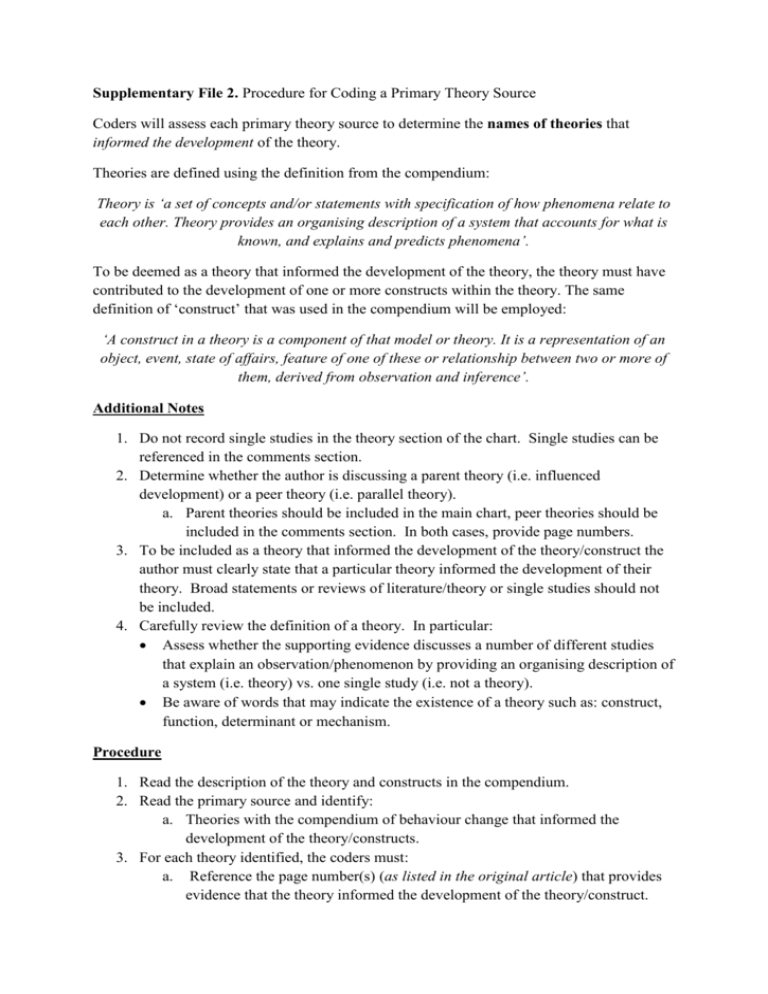
Supplementary File 2. Procedure for Coding a Primary Theory Source Coders will assess each primary theory source to determine the names of theories that informed the development of the theory. Theories are defined using the definition from the compendium: Theory is ‘a set of concepts and/or statements with specification of how phenomena relate to each other. Theory provides an organising description of a system that accounts for what is known, and explains and predicts phenomena’. To be deemed as a theory that informed the development of the theory, the theory must have contributed to the development of one or more constructs within the theory. The same definition of ‘construct’ that was used in the compendium will be employed: ‘A construct in a theory is a component of that model or theory. It is a representation of an object, event, state of affairs, feature of one of these or relationship between two or more of them, derived from observation and inference’. Additional Notes 1. Do not record single studies in the theory section of the chart. Single studies can be referenced in the comments section. 2. Determine whether the author is discussing a parent theory (i.e. influenced development) or a peer theory (i.e. parallel theory). a. Parent theories should be included in the main chart, peer theories should be included in the comments section. In both cases, provide page numbers. 3. To be included as a theory that informed the development of the theory/construct the author must clearly state that a particular theory informed the development of their theory. Broad statements or reviews of literature/theory or single studies should not be included. 4. Carefully review the definition of a theory. In particular: Assess whether the supporting evidence discusses a number of different studies that explain an observation/phenomenon by providing an organising description of a system (i.e. theory) vs. one single study (i.e. not a theory). Be aware of words that may indicate the existence of a theory such as: construct, function, determinant or mechanism. Procedure 1. Read the description of the theory and constructs in the compendium. 2. Read the primary source and identify: a. Theories with the compendium of behaviour change that informed the development of the theory/constructs. 3. For each theory identified, the coders must: a. Reference the page number(s) (as listed in the original article) that provides evidence that the theory informed the development of the theory/construct. b. Provide a comment in the pdf indicating places where the authors indicates their theory developed based on that theory. 4. Assess the reference list for references to theories listed within the compendium of behaviour change theories (a reference list provided to coders). 5. Additional theories not in the compendium of behaviour change that informed the development of the theory/constructs can be included in the comments section but will not be included in the main area of the table or computed for inter-rater reliability. 6. List challenges or concerns when coding (e.g., difficulties in interpreting the text) or recommendations for future reporting of theory (e.g., ways that the document could be improved for clarity). Data Extraction Chart Primary Theory Name 1. 2. Contributing Compendium Theories Name Page Reference Comments Challenges
